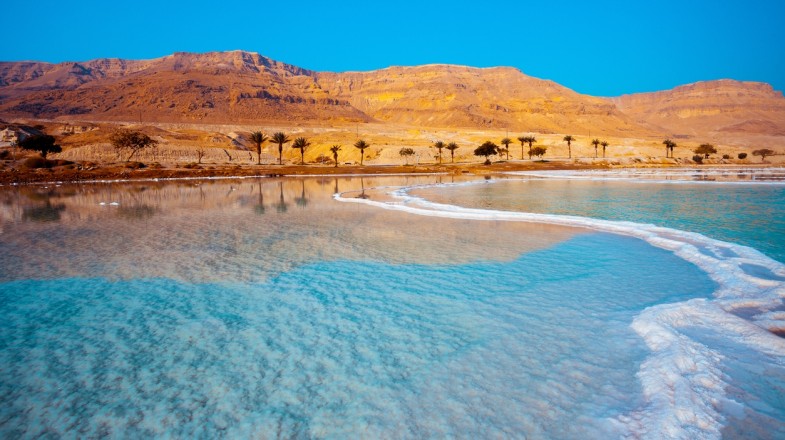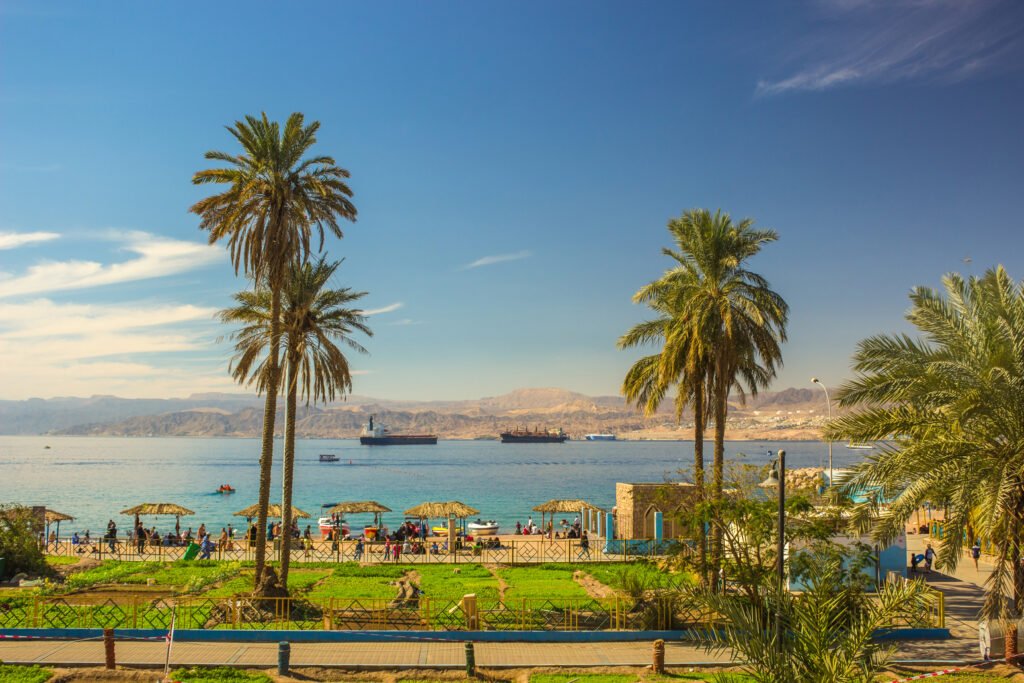Crossing Borders: How to Take a Jordan Tour from Israel (2025 Guide)

Source: www.americaisraeltours.com
Overview of Jordan Tour from Israel
Distance and Transportation Options
The proximity of Jordan to Israel makes it an appealing destination for a quick getaway. The journey from cities like Jerusalem or Tel Aviv to key Jordanian locations, such as Petra or Wadi Rum, is relatively short. The distance from Jerusalem to Petra is approximately 120 kilometres, while Wadi Rum is about 130 kilometres away.
Transportation options for this cross-border adventure are plentiful:
- Private Transportation: Hiring a car or a taxi for the journey offers the convenience of a direct route and flexibility.
- Buses: There are several bus companies providing services from major Israeli cities to the Jordanian border.
- Guided Tours: Many tour operators offer organised trips, which often include transportation, border crossing assistance, and local guides.
Regardless of the method chosen, the scenic drive over the Allenby Bridge is an experience in itself, providing magnificent views of the surrounding landscapes.
Visa Requirements and Documentation
To enter Jordan, specific visa requirements must be addressed. Travellers with valid Israeli or Palestinian Authority passports typically do not require a visa for stays of up to three months. However, it is advisable to check current regulations as they can change frequently. For those holding other nationalities, a visa may be required, which can be obtained:
- In advance: Applications can be made at Jordanian embassies or consulates worldwide.
- Upon arrival: Many borders allow for visa on arrival for tourists, making the journey even more convenient.
Ensure to keep necessary documentation handy, including:
- A valid passport (with at least six months left before expiration)
- Any relevant travel insurance documents
- Proof of accommodation or tour bookings in Jordan
Being prepared ensures a smoother transition across the border and into the wonders of Jordan
Planning Your Jordan Tour
Best Time to Visit Jordan
Selecting the best time to visit Jordan can significantly enhance the travel experience. The ideal months are generally from March to May (spring) and September to November (autumn). During these periods, the weather is pleasantly mild, making it perfect for exploring outdoor attractions like Petra and Wadi Rum.
- Spring (March to May): Wildflowers bloom, and temperatures are comfortable, typically ranging between 15°C to 25°C.
- Autumn (September to November): This season offers warm days and cooler nights, with temperatures ranging from 20°C to 30°C.
Visitors should be wary of the peak summer months (June to August), when temperatures can rise drastically, especially in desert areas, reaching up to 40°C.
Creating an Itinerary
Crafting a well-structured itinerary will ensure all must-see attractions are covered without feeling rushed.
Here's a suggested itinerary to consider:
- Day 1: Arrive in Amman and explore the Citadel and Roman Theatre.
- Day 2: Travel to Petra, spending a full day marvelling at the ancient city.
- Day 3: Head to Wadi Rum for desert activities, including a jeep tour and possibly an overnight stay under the stars.
- Day 4: Visit the Dead Sea for relaxation and unique floating experiences before returning to Amman.
Incorporating a mixture of cultural, historical, and natural sites will create a rich and fulfilling journey through Jordan. With a balanced approach, visitors can fully embrace the stunning landscapes and warm hospitality that Jordan has to offer.

Popular Destinations in Jordan
Petra: The Rose City
No trip to Jordan is complete without a visit to Petra, often referred to as the "Rose City" due to the stunning pink sandstone from which it is carved. This UNESCO World Heritage site, once a thriving Nabatean trading hub, beckons with its breathtaking rock-cut architecture.
Must-see highlights include:
- The Treasury: Iconic and magnificent, it's the first sight upon entering the site.
- The Monastery: A challenging hike rewards visitors with another spectacular view, showcasing Petra's vastness.
- The Siq: A narrow gorge leading to the Treasury, offering breathtaking natural beauty.
Allow at least a full day to explore, as wandering the ancient paths unveils countless secrets.
Wadi Rum: The Valley of the Moon
Just a short drive from Petra, Wadi Rum offers a dramatic change in scenery. Known for its otherworldly landscapes, this desert area is famed for towering sandstone mountains and expansive red dunes.
Activities to consider:
- Jeep Tours: Explore the breathtaking vistas and view ancient petroglyphs.
- Hot Air Ballooning: For a unique perspective, early morning balloon rides provide stunning aerial views of the landscape.
- Camping: Spending a night under the stars is a magical experience in this desert paradise.
Dead Sea: The Lowest Point on Earth
A visit to the Dead Sea is both relaxing and astonishing. Located about 400 meters below sea level, this fascinating body of water is renowned for its high saline content, allowing visitors to effortlessly float upon its surface.
Key attractions here include:
- Mud Baths: The mineral-rich mud is believed to have therapeutic properties, perfect for a spa-like experience.
- Unique Beaches: Take a dip in the buoyant waters or simply relax on the shores while enjoying stunning views of the surrounding hills.
These three destinations encapsulate the diverse wonders of Jordan, each offering a unique glimpse into the country's rich history and breathtaking natural beauty.

Cultural Etiquette and Tips
Dress Code and Respectful Behaviour
Understanding local customs in Jordan is vital for an enriching travel experience. The Jordanian culture is predominantly conservative, especially in rural areas. Thus, dressing appropriately shows respect for local values.
For visitors, a few dress guidelines include:
- Modest clothing: Long skirts or trousers and sleeved shirts for women, while men should avoid shorts in public places.
- Headscarves: Although not mandatory for all women, carrying a scarf for religious sites can be a considerate idea.
- Footwear: Comfortable shoes are advisable, especially when exploring Petra's rugged terrain.
Additionally, understanding key behaviours can enhance interactions:
- Greetings: A polite handshake is often customary, but it’s essential to wait for a woman to extend her hand first.
- Dining Etiquette: It is polite to accept food when offered, and using the right hand for eating is considered respectful.
Language and Communication
Arabic is the official language of Jordan, but English is widely spoken, particularly in tourist areas. Familiarising oneself with a few basic Arabic phrases can facilitate smoother interactions and show respect towards the local culture.
Consider these useful phrases:
- "Shukran" (شكرا): Thank you
- "Ahlan wa sahlan" (أهلا وسهلا): Welcome
- "Min fadlak" (من فضلك): Please (when addressing a male); "Min fadlik" (من فضلك) for a female
When communicating, patience is essential. Visitors may encounter varying levels of English proficiency, so clear and simple language goes a long way. Greeting locals with a smile and a respectful attitude fosters goodwill, making for a more enjoyable experience while exploring this vibrant nation.
Safety and Security Concerns
Travel Advisories and Precautions
When planning a visit to Jordan, it is essential to stay informed about travel advisories issued by governments. Current advisories can provide crucial information regarding safety, security, and regions that might be best to avoid.
For a safe trip, consider the following precautions:
- Stay Updated: Regularly check travel advisory websites for any changes or recommendations specific to Jordan.
- Avoid Conflict Zones: Areas near the Syrian and Iraqi borders may pose risks. Always verify the current situation before embarking on trips near these regions.
- Secure Belongings: Petty crime does occur, particularly in crowded places, so it’s wise to carry only essential items, using secure bags.
Many tourists find that Jordan is welcoming and offers a relatively safe environment. However, exercising common sense and awareness can further enhance personal safety.
Health and Emergency Services
Jordan boasts a robust healthcare system with modern facilities, particularly in larger cities like Amman. It is advisable for travellers to consider travel insurance that covers medical emergencies prior to their trip.
Key health tips include:
- Vaccinations: Ensure routine vaccinations are up to date; additional vaccinations such as Hepatitis A and Typhoid are recommended.
- Emergency Services: The emergency hotline for ambulances is 19, and most hospitals can provide English-speaking staff.
In the event of a health emergency, having local contacts for nearby medical facilities can prove beneficial. By taking these steps, visitors can focus on enjoying Jordan's beauty and heritage, knowing they are prepared for any unforeseen circumstances.
Shopping and Dining Experiences
Souvenirs and Local Markets
Exploring local markets, or souks, is a must when visiting Jordan. These vibrant spaces offer a fantastic opportunity to immerse oneself in the local culture and find unique souvenirs. Some popular items to consider include:
- Handcrafted Pottery: Each piece tells a story and makes for a charming home decoration.
- Bedouin Weavings: Colourful rugs and traditional textiles make for memorable keepsakes.
- Spices: Jordanian markets are abundant in aromatic spices that can transport one's taste buds back to the Levant.
Popular souks to explore include the Souk Jara in Amman and the historic market in Jerash. Bargaining is a common practice, allowing for a fun and engaging shopping experience while helping secure a good deal.
Traditional Jordanian Cuisine
Jordanian cuisine is a reflection of its rich history and diverse cultures, offering a delightful culinary adventure. Don't miss classic dishes such as:
- Mansaf: A national dish made with lamb cooked in a sauce of fermented dried yoghurt served over rice.
- Falafel: Crunchy and flavourful, these chickpea fritters make for a popular snack or street food option.
- Hummus and Baba Ganoush: Perfect for sharing, these dips pair wonderfully with pita bread.
For an authentic dining experience, consider enjoying meals at family-run restaurants, where hospitality and flavours are abundant. Many dining establishments also offer traditional music and dance, enriching the overall experience.
These shopping and dining explorations provide a fantastic opportunity to connect with Jordanian culture, ensuring that visitors leave with more than just memories. Whether it’s a handwoven rug or a taste of authentic mansaf, each souvenir and dish tells a part of Jordan’s story.

Accommodation Options in Jordan
Hotels and Resorts
Jordan offers a range of accommodation options to suit various preferences and budgets, from luxurious resorts to charming boutique hotels. Major cities like Amman and Aqaba host well-known chains and local gems that cater to different tastes.
- Luxury Hotels: Chains such as Four Seasons, Marriott, and Hyatt offer top-notch amenities, spa services, and fine dining.
- Mid-Range Hotels: Affordable yet comfortable options include the Landmark Amman and the Bristol Hotel, providing a pleasant stay without breaking the bank.
- Budget Hostels: For budget-conscious travellers, hostels like The Jordan Tower Hostel in Amman offer shared and private rooms with a vibrant atmosphere.
Wherever one chooses to stay, the hospitality is genuinely warm, reflecting Jordan's famous kindness and welcoming spirit.
Unique Stays in Jordan
For those seeking something truly memorable, unique lodging experiences are abundant in Jordan.
- Camp Under the Stars in Wadi Rum: Traditional Bedouin tents allow guests to experience the desert’s magic. Many camps offer cultural experiences and guided tours.
- Floating Hotels at the Dead Sea: Some resorts provide floating pools with direct access to the water, allowing guests to indulge in the therapeutic buoyancy of the Dead Sea.
- Heritage Houses: In cities like Madaba and Petra, you can find beautifully restored houses that offer guests authentic Jordanian experiences, coupled with local hospitality.
By choosing unique accommodation, visitors can create lasting memories that complement their journey through this rich and diverse country. Whether lounging in luxury or camping under the stars, every night spent in Jordan becomes a part of the adventure.
Budgeting and Currency Exchange
Average Costs in Jordan
When planning a trip to Jordan, understanding average costs can help create an effective budget. Jordan is relatively affordable compared to many Western countries, making it a great travel destination for various budgets.
Here’s a breakdown of typical expenses:
- Accommodation:
- Luxury Hotels: $150 - $300 per night
- Mid-Range Hotels: $50 - $150 per night
- Budget Hostels: $10 - $30 per night
- Meals:
- Street Food: $3 - $5 per meal for options like shawarma or falafel
- Local Restaurants: $10 - $20 per meal for traditional dishes
- High-End Dining: $30 and above for upscale dining experiences
Transportation costs, such as public transport or taxis, are also reasonable, with taxi fares starting at around $0.50 plus additional per-kilometre charges.
Currency Information
The local currency in Jordan is the Jordanian Dinar (JOD). As of now, the exchange rate is approximately 1 JOD to 1.41 USD, but this can fluctuate, so checking current rates before travelling is essential.
Currency exchange services are readily available at airports, banks, and exchange offices throughout cities. It's advisable to carry some small denominations for local markets and tips, as many places may not accept credit cards.
Understanding these budgeting points and currency considerations allows visitors to navigate their Jordanian adventure with confidence, ensuring they enjoy the experiences without financial worry. With a well-planned budget, exploring the beauty and hospitality of Jordan becomes even more accessible and enjoyable.
Crossing the Border
Border Crossings from Israel to Jordan
Crossing from Israel to Jordan is relatively straightforward, with several border crossings available. The most popular ones include:
- Allenby Bridge: This is the main crossing for tourists, located near Jericho. It offers direct access to Amman and is often used by those heading towards Petra.
- King Hussein Bridge: Convenient for travellers from Jerusalem, this border also connects directly to the northern Jordanian cities.
- Sheikh Hussein Bridge: This crossing is located in the north and is typically used for tours heading to the Galilee region or the Golan Heights.
It's important to check the operational hours of these crossings, as they can vary, especially during holidays or weekends.
Entry and Exit Procedures
Upon arriving at the border, visitors should be prepared for a few procedures to ensure a smooth crossing:
- Documents: Make sure to have a valid passport, visa (if required), and any necessary documentation, such as travel insurance or accommodation reservations.
- Customs: Each country has its customs regulations, so it is advisable to familiarise yourself with the items allowed and prohibited before crossing.
- Payment: Be prepared to pay any exit taxes or immigration fees, usually around 10 JOD when leaving Jordan.
Border crossing can sometimes take time due to queues, so patience is key. Being aware of these entry and exit procedures ensures that travellers can smoothly transition into the enchanting landscapes and rich culture of Jordan without any hiccups.
Enhancing Your Travel Experience
Guided Tours and Excursions
To truly experience the wonders of Jordan, guided tours can be a valuable addition to any itinerary. Professional guides not only provide essential context and historical background but also ensure that visitors make the most of their time. Various tours are available, catering to different interests:
- Day Tours: Explore popular destinations like Petra or Wadi Rum with a knowledgeable guide who can highlight hidden gems and share fascinating stories.
- Cultural Experiences: Join tours that include traditional Bedouin meals or local crafts workshops for an immersive cultural experience.
- Multi-Day Excursions: For those wanting to explore further, multi-day tours often include visits to multiple sites, such as Petra, the Dead Sea, and ancient ruins in Jerash, enabling a more comprehensive understanding of Jordan's rich heritage.
Activities and Adventures in Jordan
In addition to sightseeing, Jordan offers a variety of activities that thrill adventure seekers. Here are a few not to miss:
- Wadi Rum: Go for a jeep safari or experience the desert on a camel for a taste of Bedouin life.
- Dead Sea: Enjoy the unique experience of floating in its salty waters and indulge in a rejuvenating mud bath.
- Hiking: Jordan boasts stunning trails, such as the Jordan Trail, leading through breathtaking landscapes and historical sites.
By incorporating guided tours and adventurous activities, travellers can enhance their journey, making it more engaging and enjoyable. Each experience adds a layer of depth to understanding Jordan’s culture, history, and stunning landscapes, ensuring a memorable visit.
